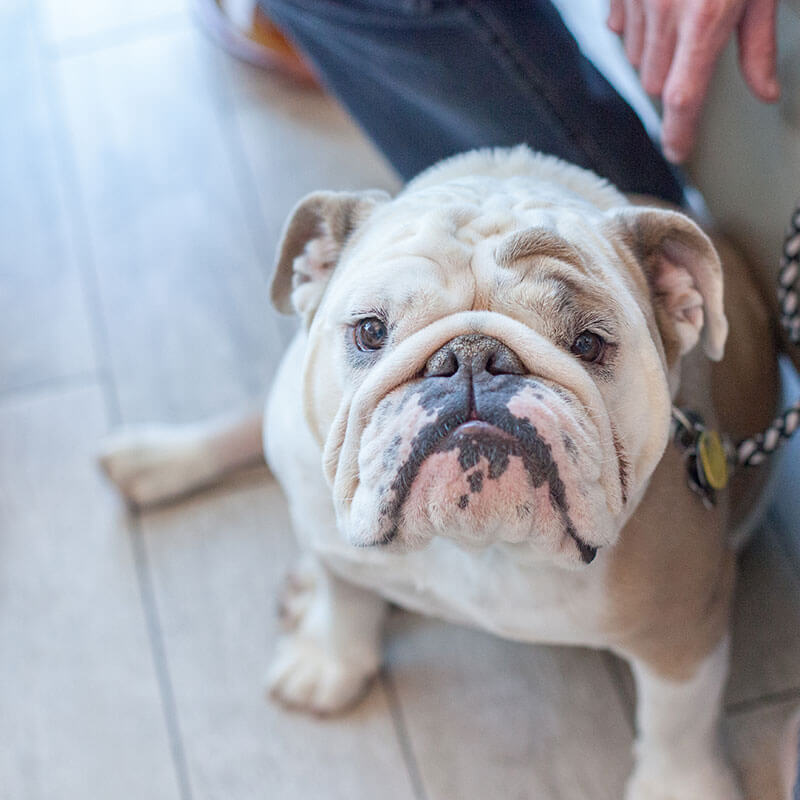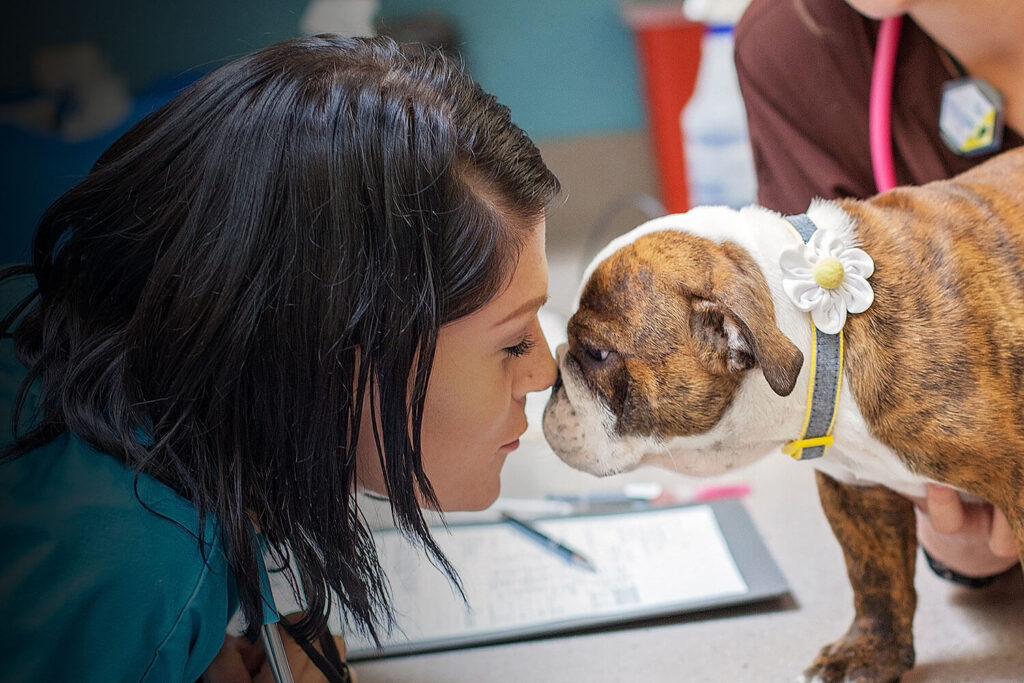DEPARTMENTS
TREATMENT OPTIONS
Pain Management
Don’t Let Your Pet Suffer.
Left untreated, pain can degrade every aspect of your pet’s health, happiness, and wellbeing. From small changes in their normal routine to complete immobility, pain is a very powerful sensation that can be a dark cloud in your pet’s life. Knowing how overwhelming it can to be to experience intense or ongoing pain for yourself, you can likely imagine what your pet is going through when you notice signs of pain.
At 1st Pet, we consider management of both acute and chronic pain in dogs and cats to be one of our most important goals. Our doctors and staff are trained to recognize pain and use the most advanced medications available, and in some cases can offer complementary options, such as medical laser, acupuncture, and physical therapy.
How do I Know if My Cat or Dog is in Pain?
In addition to being unable to tell us with words when they are in pain, our pets are often masters of hiding any indication that something is wrong. This can make it difficult to know when your pet needs to be taken to the veterinarian for further pain evaluation and treatment. With that being said, there are some signs you can watch for that may indicate a painful condition:
Changes in the way your pet moves
- Limping or an uneven gait
- Abruptly decreasing activity, or not actively pursuing favorite activities
- Difficulty getting up or down
- Sudden avoiding of certain high-impact activities (like getting into the car, using stairs, running, jumping, etc.)
Changes to your pet’s body
- Holding postures that are unusual for that pet (includes head and tail position, changing the way a leg is held, altering back alignment)
- Increased panting or breathing
- Visible eye problems (redness, cloudiness, discharge, squinting, repeated eye rubbing)
- Muscle wasting
Changes to your pet’s behavior
- Increased aggression (biting, growling, showing teeth)
- Decreased appetite
- Restlessness (frequent repositioning, getting up and down repeatedly, overgrooming, pacing)
- Altered sleep quantity (may sleep more than usual or have trouble sleeping)
- Vocalization (increased yipping, growling, moaning, whimpering, or a sudden decrease in overall vocalization)
- Avoidance or hiding behaviors (staying away from other pets, people, and certain activities)
- Changes in urination or defecation habits (altered positioning, frequency, consistency)
What Can I do to Help My Pet?
Even if you suspect pain, you should not give your pet any medication unless directed by a veterinarian. Medication that you have on hand might seem like a quick solution, but many human medications are poisonous to pets and those that are actually helpful often require very different dosing to be safely given. Even medications prescribed for pain in one pet may not be ideal for another, or could be harmful. Reducing circumstances that cause your pet additional pain (using stairs, getting up and down from raised areas, walking across slippery surfaces, etc.) can help prevent additional pain, but only a veterinarian can determine the cause, extent, and best treatment for your pet’s pain.
How do You Treat a Cat or Dog in Pain?
We offer a variety of treatment options to help your pet return to a life with less pain. To help your pet get back to normal more quickly, you should discuss pain management options with a veterinarian. All pets feel pain differently and respond uniquely to treatment, therefore, it might take a couple of tries to find the solution that is best, with some pets requiring a combination of treatments for relief. After discussing things like your pet’s medical history, living conditions, and signs of pain, your veterinarian may choose one or more of the following treatment options to help your pet feel better.
- Medication: pain relievers, muscle relaxers, steroids, etc.
- Rehabilitation Therapy: underwater treadmill, massage, therapeutic exercise, electrical stimulation, laser therapy, etc.
- Acupuncture: placement of very fine needles in specific parts of your pet’s body to alter the pain response
- Lifestyle Adjustments: there may be parts of your pet’s routine that are causing repeated injury and pain that can be avoided to stop the cycle of injury and pain
If your pet is showing signs of pain or for any reason you suspect that your pet might be hurting, contact a veterinarian. At 1st Pet you can schedule an appointment with one of our general practice doctors for ongoing pain evaluation or come in right away for emergency service, depending on the urgency of your pet’s pain. We are also available by phone if you are unsure how to proceed.




